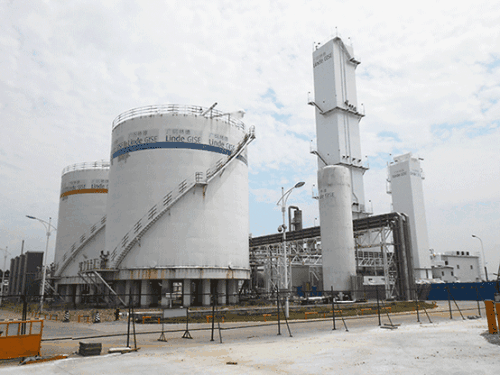Application of neon in cryogenic engineering
It is well known that the liquid temperature range of industrial gas helium is 2×10-3 -- 5.20K, the liquid temperature range of hydrogen is 14.2 -- 33.0K, and the liquid temperature range of industrial gas neon is 24.5 -- 44.40K. Because of the chemical inert nature of neon industrial gas and the large latent heat of evaporation (measured by the same volume of liquid, the refrigeration energy of liquid neon is 2.7 times that of liquid hydrogen), neon is often used instead of hydrogen as the safety coolant in the experiment within 25-40K.
It is easy to change liquid neon into solid neon when steam is pumped out from the upper part of industrial gas body neon, because the triple point temperature of neon is only about 2.5K lower than its standard boiling point. When neon is used as refrigerant, the effective cooling capacity of neon can be increased by 20% by using the latent heat of melting of solid neon. In order to be able to quickly pump large space into a vacuum state, liquid helium cryogenic pump is often used, if the vacuum requirements are not high, liquid neon cryogenic pump can also be used.
the production plant of Cryogenic engineering
The closed circulating miniature refrigerator made of industrial gas neon as medium can be used in infrared detector of missile. Liquid neon is often used in bubble chambers for high energy particle detection and research. In the United States, neon, an industrial gas, is mainly used in bubble chambers and is in high demand for disposable use. In addition, the industrial gas liquid neon is also used in the study of free radicals. With the continuous development of science and technology, liquid neon as a 25-40K low temperature coolant will be increasingly valued.
In addition, because the thermal noise in many electronic devices is reduced at low temperatures, many radio, infrared, and other radiation detection instruments can be cooled using neon to increase their sensitivity.






 Facebook
Facebook YouTube
YouTube LinkedIn
LinkedIn Twitter
Twitter